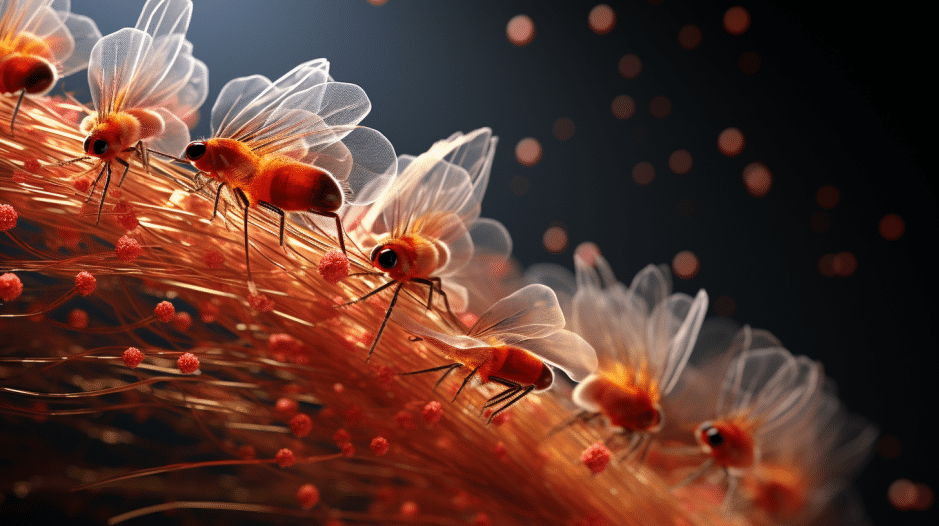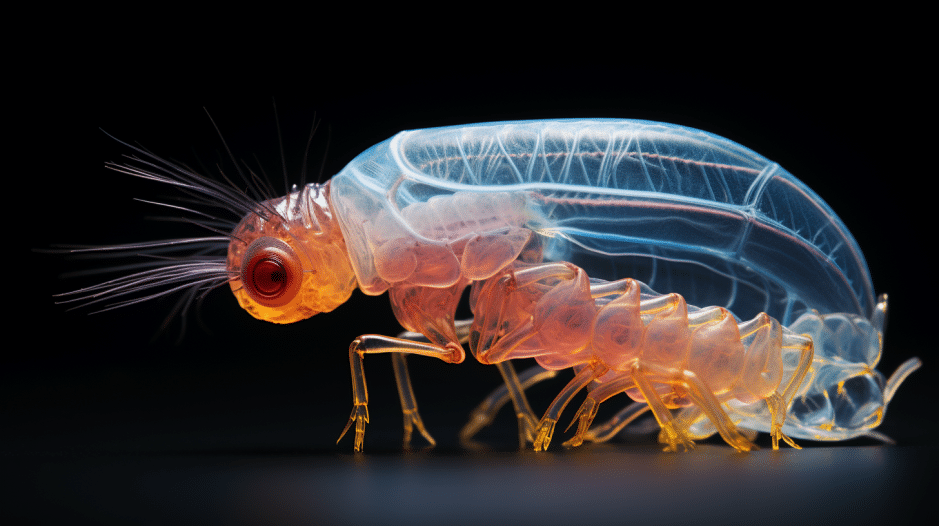Researchers have for the first time reconstructed all neurons and their connections in the brain of a fruit fly larva, revealing fundamental principles of brain organization.
The study provides an important scaffold for understanding the neural basis of behavior in this model organism.
Key Facts:
- The larval Drosophila brain contains around 3000 neurons. The full wiring diagram or connectome was mapped.
Neurons were categorized into sensory neurons, interneurons, and output neurons controlling movement. - Most connections were axo-dendritic but other types like axo-axonic and dendro-dendritic were also found. These may allow sophisticated regulation of neural activity.
- Sensory signals reached output neurons controlling movement in as little as 2-3 connections. But most neurons also received additional processed signals through longer paths, allowing complex computations.
- Extensive feedback pathways were observed from downstream neurons back to upstream partners. Around 40% of neurons displayed recurrent feedback loops.
- Neurons critical for learning and memory showed the most recurrence. Recurrent loops may support working memory and flexible neural computations.
- Most neurons integrated signals from multiple senses, although some sensory labeled lines remained, especially close to the sensory periphery.
- Around 40% of neurons sent connections to both brain hemispheres revealing extensive bilateral integration.
Source: Science. 2023 Mar 10; 379(6636)
Comprehensive Connectivity Map of a Miniature Brain
The fruit fly Drosophila is a powerful model organism for studying the neural basis of behavior.
The brains of larval fruit flies contain around 3000 neurons, orders of magnitude fewer than mouse or human brains, making them amenable to full mapping of synaptic connections between neurons, known as a connectome.
Researchers reconstructed all neurons and synapses in a first instar larval brain using electron microscopy imaging.
The resulting connectome contained 3016 neurons and 548,000 synaptic connections.
Drosophila brains contain mirrored copies of most neurons on both left and right hemispheres.
The researchers were able to match 93% of neurons to equivalent partners across hemispheres.
Sensory Neurons, Interneurons and Output Neurons
The neurons were categorized into sensory neurons, interneurons confined to the brain, and output neurons that send connections to the rest of the nervous system.
Sensory neurons transmit signals from sensory organs into the brain. Interneurons process this information and transmit signals between brain regions.
Output neurons then send signals to control movement and physiology in the body.
The researchers systematically tracked information flow from sensory neurons through interneurons to output neurons.
Output neurons controlling movement sent connections to two main targets: the subesophageal zone controlling feeding and head movements, or the ventral nerve cord controlling limb and body wall muscles.
Although sensory signals could reach output neurons controlling movement in as few as 2-3 connections, most neurons also received additional processed signals through longer paths, likely allowing more complex feature extraction and computation.
Multiple Types of Neural Connections
The most common connections were axo-dendritic, transmitting signals from neuron axons to dendrites of downstream partners.

However, around a quarter were axo-axonic, allowing sophisticated presynaptic regulation of neural activity.
Around 6% were dendro-dendritic and 2% dendro-axonic.
The role of these non-canonical connections is less clear, but they may allow fine control over both axons and dendrites.
Dendritic connections were especially common in circuits related to learning and memory.
Abundant Recurrent Feedback Throughout the Brain
Neural networks in the brain were not simply feedforward chains but displayed abundant recurrent feedback connections.
Around 40% of neurons sent signals back to their own upstream partners, forming recurrent loops.
Some neurons displayed recurrent pathways of multiple different lengths to the same partners.
The most recurrent neurons were involved in learning and action selection.
They included outputs of the learning center as well as neurons that signal positive or negative outcomes.
Recurrence may allow maintenance of working memory and support flexible neural computations.
Output neurons controlling movement also sent extensive recurrent signals back to upstream partners.
These likely provide copies of movement commands, known as efference copy, which could be used to predict sensory consequences of actions.
Movement command neurons even sent direct feedback to learning center neurons, which may allow learning about self-generated actions.
Integrating Signals from All Senses
Although some sensory labeled lines remained, especially close to sensory organs themselves, most downstream neurons integrated signals related to many senses.
For example, neurons involved in learning associations between sensory cues and rewards or punishments received input from all sensory modalities, not just those providing cues.
This may allow animals to learn associations between rewards and complex multisensory stimuli.
Bilateral Sensory Integration
Around 40% of interneurons sent connections to both the left and right brain hemispheres.
Extensive bilateral cross-talk suggests sensory signals are integrated across hemispheres early during processing.
Some bilateral neurons selectively targeted distinct partners in each hemisphere, potentially coordinating asymmetric motor patterns.
Others formed reciprocal loops between equivalent left-right neuron pairs, which may support working memory or parallel sensory processing.
Overall the study provides unprecedented insight into brain architecture in this important model organism.
It also reveals organizational principles like recurrence and multisensory integration that likely apply to brains more broadly.
Connectomic maps are an essential foundation for deciphering the neural circuits underlying behavior and cognition.
References
- Study: The connectome of an insect brain
- Authors: Winding et al. (2023)







